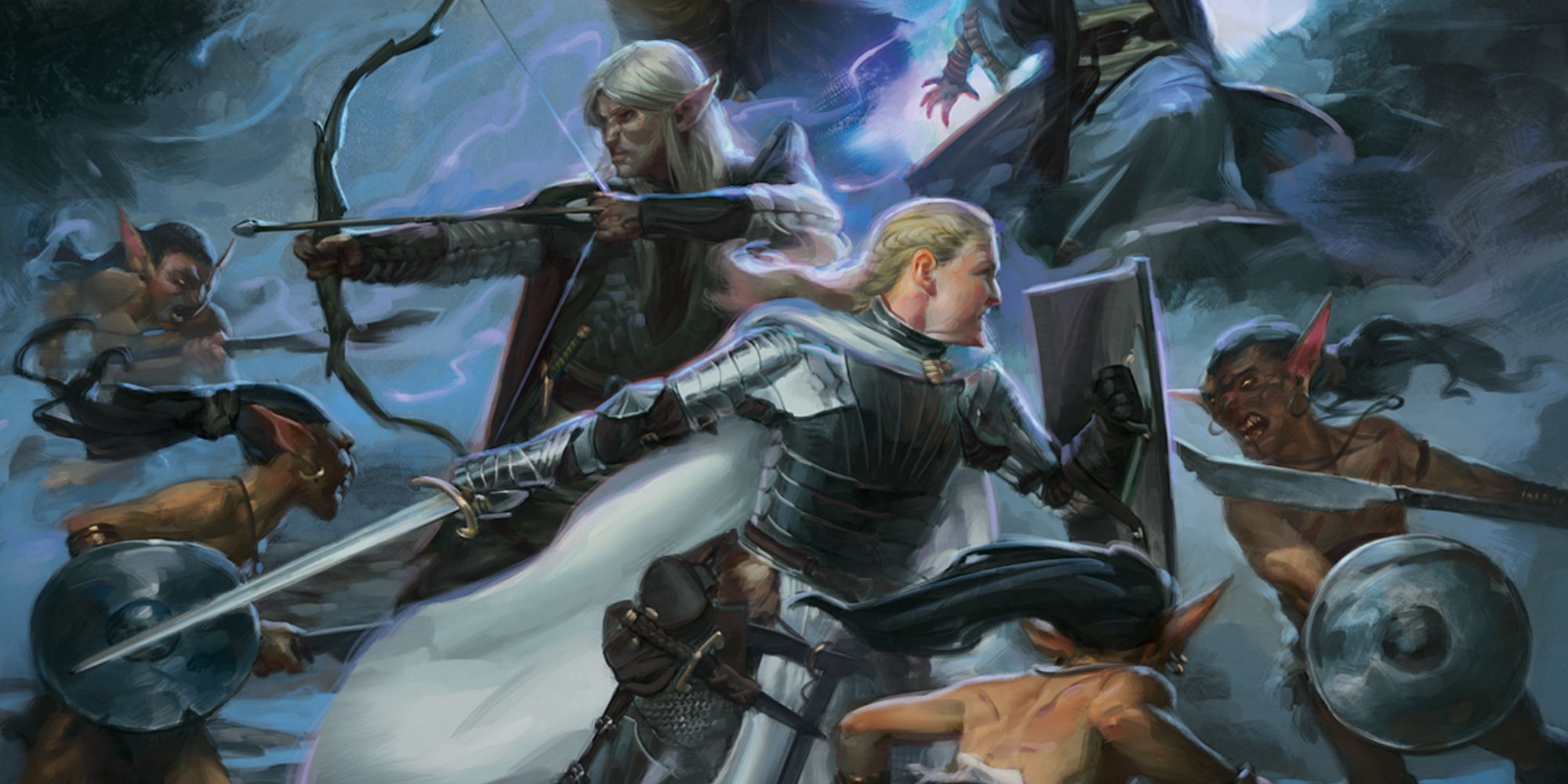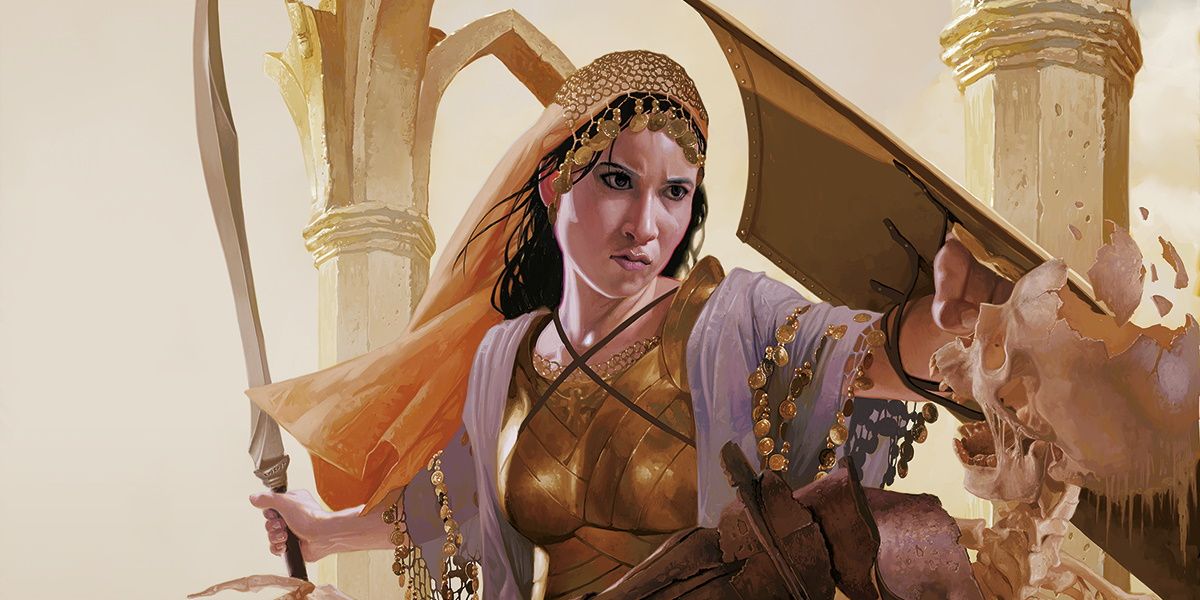There are many different ways to play Dungeons & Dragons and most groups use a mixture of styles in their games. There are some players who love roleplaying more than anything else, but play in games that have combat and exploration sections. There are some low-effort D&D character builds that are still effective and don't require much maintenance on the part of the player, so that they can focus on the part of the game that they enjoy the most.
The current edition of D&D easily has the loosest rules for character creation. The days of races not being able to take specific classes are long gone and players are free to make the kinds of characters they want. D&D's new racial stat bonus rules (introduced in Tasha's Cauldron of Everything) have improved things even further, as players no longer feel pressured to pick certain race/class combos. Players have a lot of freedom to make interesting and memorable characters, without being afraid of the characters being a detriment to the group in a dungeon.
D&D 5e has comparatively little bookkeeping when it comes to managing a character when compared to other tabletop RPGs and the older editions of the game. There are some classes and builds that require more management than others, due to having an expansive spell list that needs to be maintained or possessing lots of special abilities that alter how they fight in combat. The people who just want to focus on roleplaying and want an effective build that doesn't require a lot of bookkeeping can use one of the following low-effort builds for their character.
The Champion Fighter Is The Ultimate L0w-Effort Build
The fighter is the most fluid class in D&D when it comes to creating a concept. Most of the other classes have some kind of training implied in their backstory, with spellcasters spending years honing even the most basic spells, sneaky characters learning how to survive on the rough streets of a city, nature characters thriving in the great outdoors, and holy warriors spending time memorizing ancient texts. Even bards have to learn how to play an instrument, unless the DM is fine with them going into battle playing a triangle. The fighter is just someone who is skilled at fighting and that experience can be learned in countless different ways. This means that the class with (arguably) the most limited range of abilities has the most possibilities when it comes to character creation.
In terms of a low-effort build, the fighter has the least-intrusive subclass in all of D&D. The Champion subclass from the Player's Handbook provides passive buffs to critical threat range, strengthens their physical ability checks, and grants an extra Fighting Style, all of which are very easy to keep track off. To create a low-effort fighter that can keep up with the rest of the group, just give them the Dueling fighting style, a longsword, a shield, put them in the heaviest armor possible, and have them fight in the front row of combat. The player doesn't need to worry about any other aspect of maintaining the character, outside of keeping track of Second Wind/Action Surge, and upgrading their skills/abilities as they level up.
The Inquisitive Rogue Is All About Useful Skills (Without The Thievery)
The rogue class in D&D might be the second most fluid class when it comes to character concepts, as the idea of someone who aids the party by being sneaky, uses underhanded skills, and wins fights by exploiting the weak spots of their enemies is something that can be interpreted in a number of different ways. The rogue can be a spy, a hired killer, a pickpocket, a scout, an explorer, or a vigilante, to name just a few of the ideas that players can use. There is a lot of scope for character ideas for the rogue and the fact that they have four skill proficiencies means there are a lot of customization options to fit that character.
The problem when it comes to a low-effort build is that the subclass options in the D&D Player's Handbook are limited. The Arcane Trickster has spells that need to be organized, the Thief is notoriously underpowered until the mid-high levels, and the Assassin pigeonholes the character into the hired killer concept, which might not be what the player is going for with their character. Xanathar's Guide to Everything provides a solid replacement option, in the form of the Inquisitive subclass. The Inquisitive is someone who uses their sharp senses to work out details and enemy weaknesses that other characters may miss. This can be interpreted in many different ways for a character concept, making it easier to adapt than the Thief or Assassin. The Inquisitive also has some fantastic combat abilities, as well as exploration skills that make it easier to solve problems that the players might be struggling with.
The Life Domain Cleric Only Needs To Heal
The players who want to play a low-effort build spellcaster can do so by leaning into one of the most important class roles - the healing cleric. The cleric class has access to a number of different builds and domains across the different D&D 5e sourcebooks, but the most basic of these is the Life Domain from the Player's Handbook. The Life Domain's Domain Spells always ensure that the character has access to powerful healing spells without needing to worry about keeping track of prepared spell slots. The Life Domain's subclass features are all about boosting the effects of healing spells, save for Divine Strike at level 8, and that just provides extra damage dice on specific attacks. The character's goal while exploring or in combat is to pump healing magic into their allies and maybe throw out a battle cantrip or Turn Undead when needed.
It's a lot easier to use this build with a variety of character concepts in D&D 5e. In the older editions of D&D, the rules were a lot more strict about what domains/portfolios each D&D god had access to and what spells they could provide to their followers. This rule isn't as harshly enforced in D&D 5e and the Player's Handbook only mentions that worshipers of non-evil gods can select the Life Domain. This leaves a ton of options for deities for the Dungeons & Dragons player to select from, so they can easily play a worshiper of a god of magic, nature, the sea, law, one of the elements, one of the races, or even a god of war, and still have access to to the Life Domain.




